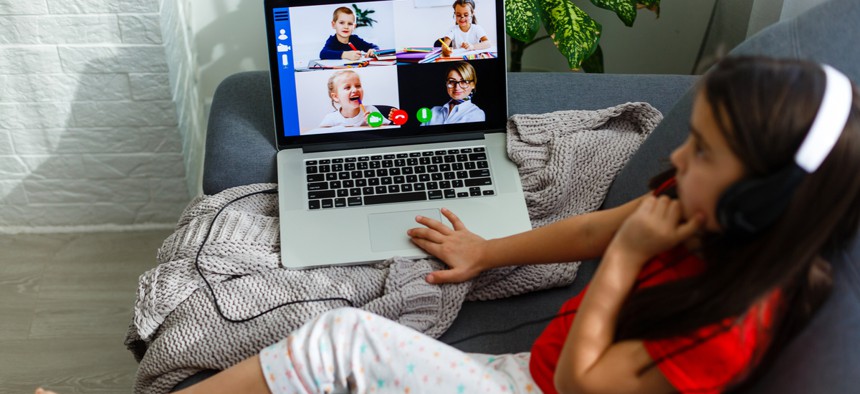As Virus Keeps Kids From Schools, New Figures Show Millions Lack Home Internet

Andrew Angelov/Shutterstock.com
Meanwhile, a California education official this week said it would take at least $500 million to get students there the computers and internet access they need, and asked the private sector to help.
Nearly 1-in-10 households with school-aged children lack a consistent internet connection that can be used for educational purposes at a time when millions of kids have been forced out of classrooms by the coronavirus, according to federal estimates released on Thursday.
The share of households without surefire internet access is higher among those with lower incomes and people of color, the estimates from the U.S. Census Bureau show.
Among 60 million households with children in public or private schools, about 5.4 million, or just over 9%, have internet available only “sometimes,” “rarely,” or “never” for educational purposes, the estimates suggest.
About 3.2 million of those households with limited internet service earned under $35,000 a year, meaning that among 16.6 million households captured by the data that earned less than that sum, about 20% are lacking dependable internet access.
The findings also highlight disparities by race. About 16% (1.4 million out of 9.2 million) of black households with school-aged kids are estimated to “sometimes,” “rarely,” or “never” have an internet connection for educational purposes. The same is true for just 7% (2.2 million of 32 million) of white households. The figure for Hispanic and Latino households was about 10% (1.3 million of 13 million).
In California on Wednesday, state superintendent of public instruction, Tony Thurmond, said during an online briefing that it would take at least $500 million to cover the cost of providing K-12 students in the state with the computers and internet connections that they need.
He called on private companies, foundations and individuals to step up to help bridge that gap.
Thurmond said that the state has already worked alongside companies like T-Mobile, Verizon and Amazon to distribute over 100,000 internet hotspots throughout the state, as well as 21,000 computing devices to districts that are in need of them.
But about 600,000 students are waiting for computers and 300,000 to 400,000 have an immediate need for internet service, he said.
The state’s roughly 6 million students have been in “distance learning” since March, around the time the virus took root.
“Before the pandemic, we knew there were huge inequities that existed in regards to student access to devices and internet connectivity. The effects of COVID-19 have only made this more visible and created a sense of urgency,” said Thurmond.
“Access to technology and reliable, affordable internet is not only necessary for distance learning but also for lifelong success,” he added.
Meanwhile, in Baltimore this week, a group of youth advocates and city council members—citing the needs of students—pushed Comcast to expand and upgrade internet service options that it has made available to low-income residents in the city.
The Census Bureau estimates were released as part of the agency’s most recent Household Pulse Survey, which looks at a variety of issues and tries to gauge the effects of the coronavirus pandemic. The latest results are based on survey data collected between May 14 and May 19. More about the findings can be found here.



